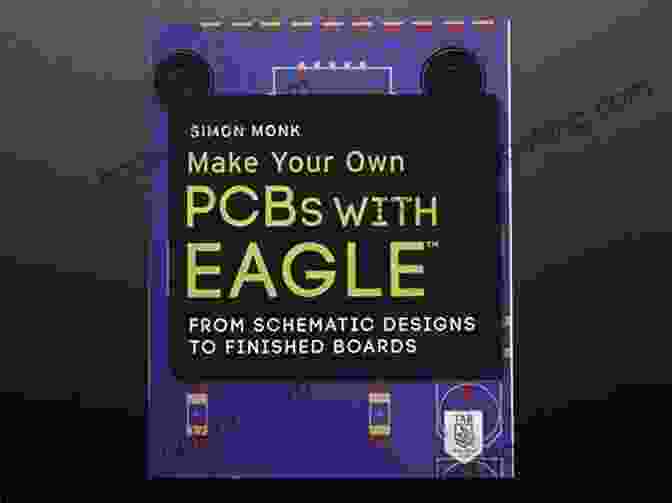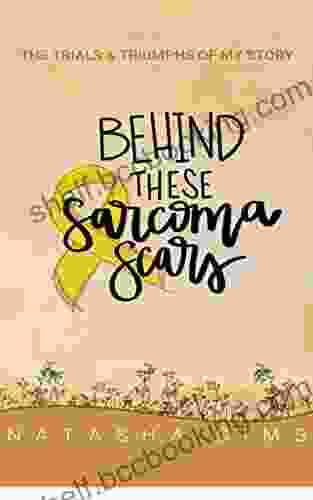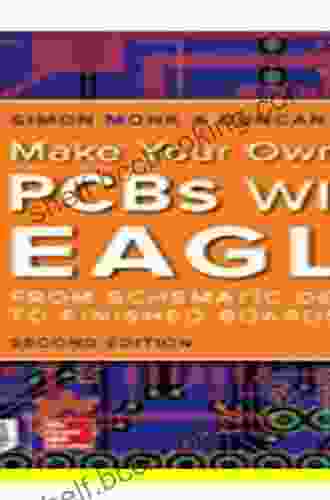From Schematic Designs to Finished Boards: The Ultimate Guide to PCB Design

Printed circuit boards (PCBs) are essential components in a wide range of electronic devices, from smartphones and laptops to medical equipment and industrial controllers. Designing and fabricating PCBs can be a complex and challenging process, but it's essential to get it right to ensure the reliability and performance of your electronic devices.
4.4 out of 5
| Language | : | English |
| File size | : | 43504 KB |
| Text-to-Speech | : | Enabled |
| Enhanced typesetting | : | Enabled |
| Print length | : | 366 pages |
| Screen Reader | : | Supported |
This comprehensive guide will take you through every step of the PCB design process, from creating schematic designs to fabricating finished boards. You will learn the essential techniques and considerations for each stage of the design process, and you will be able to use this knowledge to create high-quality, reliable PCBs for your electronic projects.

Step 1: Create a Schematic Design
The first step in the PCB design process is to create a schematic diagram. A schematic diagram is a graphical representation of the electrical connectivity of the circuit. It shows the different components of the circuit, such as resistors, capacitors, transistors, and integrated circuits, and how they are connected together.
There are a number of different software programs that you can use to create schematic diagrams. Some popular options include Altium Designer, Cadence Allegro, and Eagle CAD. Once you have chosen a software program, you can begin to create your schematic diagram. Start by adding the different components of the circuit to the schematic. Then, connect the components together using wires or traces. As you add components and connections to the schematic, be sure to keep track of the different nets in the circuit. A net is a group of connected components that share a common electrical potential.
Once you have completed the schematic diagram, you can simulate the circuit to verify its functionality. Simulation is a process of running a computer model of the circuit to predict its behavior. This can help you to identify and correct any errors in the schematic design before you proceed to the next step.
Step 2: Generate a PCB Layout
Once you have completed the schematic design, you can generate a PCB layout. A PCB layout is a physical representation of the circuit that you created in the schematic diagram. It shows the location and orientation of the different components on the PCB, as well as the routing of the traces that connect the components together.
There are a number of different software programs that you can use to generate PCB layouts. Some popular options include Altium Designer, Cadence Allegro, and Eagle CAD. Once you have chosen a software program, you can import the schematic diagram into the program and begin to create the PCB layout.
When creating the PCB layout, you will need to consider the following factors:
* **Component placement:** The placement of the components on the PCB will affect the overall size and shape of the board. You will need to place the components in a way that minimizes the distance between them and reduces the number of traces that cross over each other. * **Trace routing:** The traces that connect the components together should be routed in a way that minimizes the length of the traces and avoids sharp corners. You will also need to make sure that the traces do not cross over each other or come too close to each other. * **Power and ground planes:** The power and ground planes are important for providing power and ground to the components on the PCB. You will need to design the power and ground planes in a way that minimizes the noise and interference on the board.
Step 3: Fabricate and Assemble the PCB
Once you have completed the PCB layout, you can fabricate and assemble the PCB. Fabrication is the process of creating the physical PCB from the design files. Assembly is the process of attaching the components to the PCB.
There are a number of different companies that can fabricate and assemble PCBs. You can choose a company based on the size and complexity of your PCB, as well as the turnaround time that you need.
Once you have received the fabricated and assembled PCB, you can test the PCB to verify its functionality. Testing can be done using a variety of methods, such as visual inspection, electrical testing, and functional testing.
Designing and fabricating PCBs can be a complex and challenging process, but it is essential to get it right to ensure the reliability and performance of your electronic devices. By following the steps outlined in this guide, you can create high-quality, reliable PCBs for your electronic projects.
4.4 out of 5
| Language | : | English |
| File size | : | 43504 KB |
| Text-to-Speech | : | Enabled |
| Enhanced typesetting | : | Enabled |
| Print length | : | 366 pages |
| Screen Reader | : | Supported |
Do you want to contribute by writing guest posts on this blog?
Please contact us and send us a resume of previous articles that you have written.
 Book
Book Novel
Novel Page
Page Chapter
Chapter Text
Text Story
Story Genre
Genre Reader
Reader Library
Library Paperback
Paperback E-book
E-book Magazine
Magazine Newspaper
Newspaper Paragraph
Paragraph Sentence
Sentence Bookmark
Bookmark Shelf
Shelf Glossary
Glossary Bibliography
Bibliography Foreword
Foreword Preface
Preface Synopsis
Synopsis Annotation
Annotation Footnote
Footnote Manuscript
Manuscript Scroll
Scroll Codex
Codex Tome
Tome Bestseller
Bestseller Classics
Classics Library card
Library card Narrative
Narrative Biography
Biography Autobiography
Autobiography Memoir
Memoir Reference
Reference Encyclopedia
Encyclopedia Yuval Taylor
Yuval Taylor Marilla Mulwane
Marilla Mulwane Jason Dukes
Jason Dukes Naomi Oreskes
Naomi Oreskes Renato Rosaldo
Renato Rosaldo Jasjeet Kaur
Jasjeet Kaur Thomas J Sargent
Thomas J Sargent Jason Fried
Jason Fried Stefan Voigt
Stefan Voigt Jim Corrigan
Jim Corrigan Jane Wilson Howarth
Jane Wilson Howarth Katie Parker
Katie Parker Sari Botton
Sari Botton Joseph Mctaggart
Joseph Mctaggart Tim J Wise
Tim J Wise Janet Riehecky
Janet Riehecky Jared Kant
Jared Kant Sasha Duerr
Sasha Duerr Robin Jones Gunn
Robin Jones Gunn Jason Wallace
Jason Wallace
Light bulbAdvertise smarter! Our strategic ad space ensures maximum exposure. Reserve your spot today!

 Junichiro TanizakiPositive Discipline for Teenagers (Revised 2nd Edition): Transforming the...
Junichiro TanizakiPositive Discipline for Teenagers (Revised 2nd Edition): Transforming the...
 Mario Vargas LlosaUnveiling the Inspirational Journey of "Behind These Sarcoma Scars" by...
Mario Vargas LlosaUnveiling the Inspirational Journey of "Behind These Sarcoma Scars" by...
 Clay PowellThe Harder You Work, the Luckier You Get: Unlock the Secrets of Success and...
Clay PowellThe Harder You Work, the Luckier You Get: Unlock the Secrets of Success and... Colin FosterFollow ·9.3k
Colin FosterFollow ·9.3k Gabriel BlairFollow ·2.9k
Gabriel BlairFollow ·2.9k Clark CampbellFollow ·13.9k
Clark CampbellFollow ·13.9k Fabian MitchellFollow ·17.2k
Fabian MitchellFollow ·17.2k Roger TurnerFollow ·10.6k
Roger TurnerFollow ·10.6k Anton FosterFollow ·4.1k
Anton FosterFollow ·4.1k Harold BlairFollow ·8.5k
Harold BlairFollow ·8.5k Orson Scott CardFollow ·8.8k
Orson Scott CardFollow ·8.8k

 Carlos Drummond
Carlos DrummondHow Companies Win the Mergers and Acquisitions Game:...
In today's...

 Craig Blair
Craig BlairMastering The Delicate Balance Between Power And Peace
In today's ever-evolving world, the interplay...

 Wade Cox
Wade CoxUnveiling the Zen of Golf: A Journey to Inner Mastery
: The Harmony of Mind,...

 Gerald Bell
Gerald BellDarkness Triumphant: Three of the Catmage Chronicles
Synopsis ...

 Henry James
Henry JamesDarkness Rising: One of the Catmage Chronicles
A Captivating Fantasy Adventure...
4.4 out of 5
| Language | : | English |
| File size | : | 43504 KB |
| Text-to-Speech | : | Enabled |
| Enhanced typesetting | : | Enabled |
| Print length | : | 366 pages |
| Screen Reader | : | Supported |







